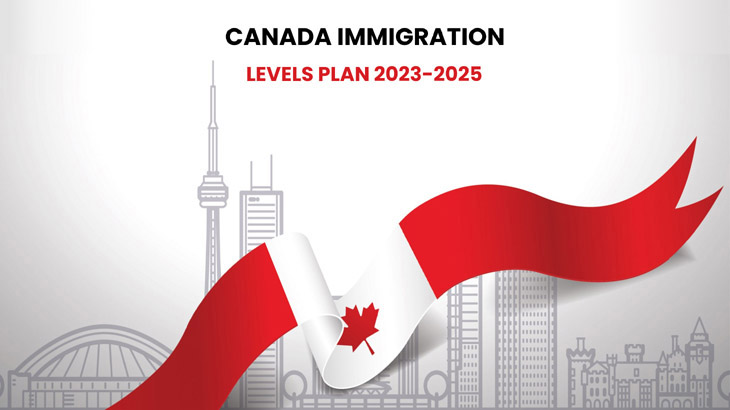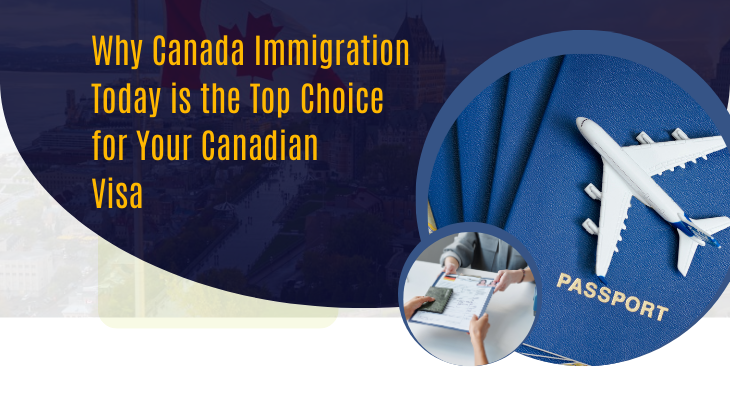After breaking its all-time immigration record in 2021 by welcoming over 405,000 immigrants in a single year, Canada Immigration Levels Plan 2023-2025 has established even higher immigration aspirations for the next three years.
The Immigration Levels Plan guides the number of immigrants Canada aims to welcome each year. Canada'sCanada's immigration goals include growing the economy, reuniting families, and offering asylum to refugees fleeing hardship abroad.
The Liberal government built on these targets but, due to an economic recession, also began to emphasise inviting newcomers, more economical class immigrants and reducing Canada'sCanada's family and humanitarian class shares. Immigration, Refugees and Citizenship Canada are pleased to release details on the Government of Canada'sCanada's Immigration Levels Plan for 2023-2025. Canada aims to welcome 465,000 new permanent residents in 2023, 485,000 in 2024 and 500,000 in 2025.
Canadas Immigration History
Canada's current immigration strategy began to take its current form in the 1980s. At that time, the government did not look as far into the future and often based immigration targets on the day-to-day economy. In 1984, Canada welcomed fewer than 90,000 immigrants. Leading into the 1990s, the Canadian government under the Conservatives recognised the impending labour shortage and increased immigration targets to 250,000 new permanent residents in the space of eight years.
Canada welcomed some 260,000 immigrants annually until the Liberal government took power in 2015. The targets were increased to 300,000, followed by 340,000 right before the onset of the COVID-19 pandemic in 2020.
The closure of borders and other travel restrictions in 2020 made it difficult for IRCC to process applications. Still, Canada exceeded its 2021 immigration target and broke the record for the most permanent residents invited in a year, at 405,000. These targets were reached through large allocations of spots through the Canadian Experience Class and Provincial Nomination Programs (PNPs).
Express Entry and PNP Targets Rise
Most new permanent residents immigrate through economic class programs such as those within the Express Entry system or Provincial Nomination Programs (PNPs).
The targets for Express Entry landings (principal applicants, spouses, and dependents) will rise as follows:
1. 82,880 in 2023
2. 109,020 in 2024
3. 114,000 in 2025
The PNP will remain Canada'sCanada's leading admissions program for economic class immigrants, and targets will also increase to;
1. 105,500 in 2023
2. 110,000 in 2024
3. 117,500 in 2025
Higher PGP admissions
IRCC also has the mandate to reunite families. After economic class programs, family class sponsorship is the second largest permanent residence class set out by the Immigration Levels Plan. Under family-class immigration programs, applicants are sponsored for permanent residence by a spouse, partner, children, or another family member.
Canada will continue to look to welcome some 80,000 new immigrants per year under the Spouses, Partners and Children program.
Targets for the Parents and Grandparents Program will rise to 28,500 in 2023, 34,000 in 2024, and 36,000 in 2025.
Refugee and Humanitarian Class Targets to Decline
Refugees and humanitarian class immigrants are also allocated under the Immigration Levels Plan. Canada has a long-standing reputation for extending asylum to displaced persons fleeing unsafe situations in their home countries.
Canada currently has high humanitarian class targets due to its ongoing efforts to complete several campaigns, such as welcoming some 40,000 refugees from Afghanistan. The overall refugee class target will be just over 76,000 new landings in 2023 and 2024 before dipping to 72,750 in 2025. The same goes for the humanitarian class target, declining from nearly 16,000 in 2023 to 8,000 in 2025.
A rise in Express Entry, PGP, and PNP targets
1. Most new permanent residents immigrate to Canada using economic routes through Express Entry System or Provincial Nomination Program (PNP).
2. The targets for Express Entry rose for the next three years. These targets include Principal applicants, joint Law partners, spouses, and dependents.
3. The immigration targets for PNP for economic class pathways also increased for 2023- 2025.
4. The second largest PR route is family class sponsorship under Immigration Levels Plan.
5. The Parents and Grandparents or family class immigration program immigration targets increased for the next three years.
6. Usually, the applicant needs to sponsor PR to partners, spouses, children, or other family members.
Why Canada Needs Immigrants?
Canada is currently in a unique period where there is a labour shortage alongside nearly one million job vacancies. Both are driving factors in the country's growing immigration targets. Labour shortages are further impacted by Canada's low birth rate of 1.4 children per woman, one of the lowest globally.
Due to the slow natural increase in the population (the number of births still exceeds the number of deaths each year), immigration will soon be the only way that Canada'sCanada's population and labour force will be able to grow. Newcomers are also needed to maintain a solid tax base, which is critical in Canada's efforts to provide essential services such as education and healthcare.
According to Statistics Canada, there were 957,500 job vacancies in Canada in the first quarter of 2022 — the highest quarterly number on record. Houses and rentals in Canada have been expensive since before the pandemic. Even after the market peaked in 2022, affordability remains an urgent concern. Adding people without adding housing will only intensify the issue.
Canada has one of the world's oldest populations. Approximately nine million people, or nearly a quarter of Canada'sCanada's population, will reach retirement age by 2030. This will create an urgent shortage of workers throughout all sectors of the economy.
Next Three Year Target
1. 2023: In 2023, Canada will target the arrival of 465,000 new permanent residents (PR).
2. 2024:This target will rise to 485,000 new Canadian PRs in 2024.
3. 2025: Finally, in 2025, Canada aims to welcome 500,000 immigrants to this country.
Need for Immigration Consultant
Individuals seek guidance from an immigration consultant, either for help with immigration applications or assistance with family sponsorship. In that case, picking a reliable professional with high standards is essential. After all, one wants their immigration application to be accepted on the first attempt.
Therefore, it is essential to choose an immigration consultant that one can rely on for their immigration application needs. If they have never worked with an immigration consultant, they may not know where to start when choosing the right one for their situation. To make the whole process easier for the applicants. It might be suspicious during the initial consultation, but later one can understand better.
The immigration process is a perplexing phenomenon for most applicants. Most of these people may seem like a baffling mystery, and confusion is common. Immigration Consultants will best deal with apprehensions and queries about this.
An experienced Canada Immigration Consultant will do the job for those planning to apply for a visa in the Canadian embassy. All you need to do is go through this list of top Canadian immigration consultants to assist you in the best possible way to turn your dreams of living abroad into a reality.
Canada Immigration Today welcomes innovative business ventures and invites entrepreneurs from other countries to benefit from the strong Canadian economy. The process is intended to allow for the expedited migration of foreign-owned businesses looking to operate in Canada. Applicants should consult a good Canada Immigration Consultant for an easy process.
Summary of Canada Immigration Levels Plan 2023-2025
The government must announce the Immigration Levels Plan each year by November 1 as per the Immigration and Refugee Protection Act (IRPA), which is Canada'sCanada's leading immigration law. However, the 2022-2024 immigration levels plan was the second announced in 2022. The first occurred in February after the most recent federal election on September 20, 2021, which caused the 2021 announcement to be delayed.
Canada broke its all-time immigration record by welcoming over 405,000 immigrants in 2021 and is looking to welcome nearly 432,000 immigrants this year. The Immigration Levels Plan guides the number of immigrants Canada aims to welcome each year. Canada's immigration goals include growing the economy, reuniting families, and offering asylum to refugees fleeing hardship abroad.














Post Comments